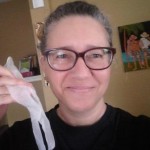
Best Strategies are Barriers and Avoidance; then Cleaning; with Disinfection being Less Predictable.
No-one knows everything, and there is NO foolproof way to eradicate a virus once it has emerged. But understanding what we do know about viruses, and COVID-19 in particular, can help.
Without rehashing what we hear daily, I’d like to draw attention to the following, often overlooked details that can keep us saner and safer.
- Not everyone infected by the virus will show signs or get sick. That’s typical, and somewhat wonderful in that a healthy immune system will have a huge impact on how sick we get if infected. On the flip side, it means that there is no sure way to tell who is infected, or who can spread the virus, including ourselves… no matter how well we self-monitor. This could sound scary, but if you view every encounter as a possible transmission, you can behave in ways that will reduce risk to an absolute minimum.
- The virus is primarily spread by droplet form, and outside of specific hospital-type equipment, does not appear to be viable as an aerosol. This means that when someone who is infected breathes out, speaks, sneezes or coughs they are expelling tiny droplets of water that will likely contain the virus in a form that can infect others if inhaled. Just like any other droplet of air, these droplets are not magical, and will observe the law of gravity and fall to the first solid object beneath them. Make sure that isn’t you!! Stay a safe distance away from others. Someone not speaking, yelling, coughing or sneezing will not propel the virus as far as someone who is. As a courtesy, if forced into closer spaces, as when passing on a sidewalk or in a hallway, say “Hello” from a safe distance, and turn your face away from the other person’s direction and downward as you pass. We send saliva and possibly sputum flying when we talk and even breathe, so aim your mouth/voice away from people and touchable surfaces, to reduce transfer.
- Virus can remain viable on surfaces for some time but they do not float around the air defying gravity. Like a snowflake, however, they may be suspended for a few moments before landing. Be conscious of surfaces like counters, under which people pause, rest, speak or stand.
- Cleaning can remove them. Soap makes things slippery so that they don’t stick and can be easily washed away or removed. Best strategies are barriers and avoidance of contact (distancing, protective hygiene habits); next is to wash any potentially compromised surfaces (hand washing, cleaning surfaces), and for the germs that made it past steps 1 and 2, the use of a disinfectant may provide added peace of mind.
- Concentrate on the 1st two methods, they are the most reliable. Learn how to get really good at recognizing opportunities for viral transmission and avoid them whenever possible. Since it’s not a perfect world, clean up potentially compromised surfaces. If you need to disinfect, use options that aren’t likely to cause something worse! And use as mild a soap as possible. Repetitive exposure to things that dry or irritate the skin increases risk. Rough, damaged skin provides great hiding places for germs and makes hand washing less effective.
- Masks! If you are coughing and sneezing, masks will help protect others from becoming infected by you. Novice users of masks however, touch the mask and their face more often than non-users and each touch increases the probability of contamination. Masks protect the other people and caregivers from those who are infected or symptomatic. But masks can also be warm, moist breeding grounds for many other pathogens. There is likely no net benefit, and potential risk, to an uninfected person wearing a mask.
How else can you make a difference? Do everything to maintain a robust immune system. Don’t compromise your health, especially now, with poor nutrition, inactivity, poor sleep, compromised postures or unhealthy lifestyle habits. By understanding the natural behaviours of this new virus, we can confidently and effectively do our part more effectively. Reduce the impact and allow resources to remain available to those who need it.
I recently heard a quote attributed to Maya Angelou, “Hope and Fear cannot occupy the same dwelling. Invite Hope to stay.”
Keep yourselves healthy. Nurture yourselves with frequent movement, good food, restorative sleep, reliable and inspirational wisdom and know that we are here for you.
